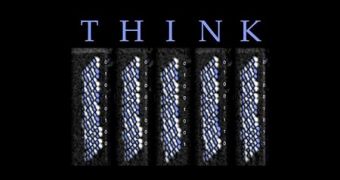Looks like magnetic storage, whose main representative today is the HDD segment, may not be going anywhere after all, regardless of what SSD makers say or hope.
No one actually knew, until now, just how many atoms are needed to build magnetic memory structures, but IBM has just discovered.
Today's hard drive units use millions of atoms for storing the bits and bytes of information that make up all the data the world uses. For those who want to be specific, about 1 million atoms are used to store a single bit.
Now, IBM has discovered that, in order to build magnetic memory, even just 12 atoms are enough for storing a bit of data.
The company has come up with a technique that relies on ferromagnetism and which has finally enabled a breakthrough in controlling the interaction between bits.
Basically, 12 antiferromagnetically coupled atoms were automatically engineered using a scanning tunneling microscope (STM).
The particles were able to store a bit of data at low temperatures, for multiple hours.
That may not seem like much, but it may just be the one, big step in the right direction that HDD makers have been looking for.
If the research progresses well over the next several years, HDDs will not just be super-capacious, but also faster, smaller and much more energy-efficient than today.
“The chip industry will continue its pursuit of incremental scaling in semiconductor technology but, as components continue to shrink, the march continues to the inevitable end point: the atom. We’re taking the opposite approach and starting with the smallest unit -- single atoms -- to build computing devices one atom at a time.” said Andreas Heinrich, the lead investigator into atomic storage at IBM Research – Almaden, in California.
Anyone who wants to read the technical details of the process can simply drop by the official announcement.

 14 DAY TRIAL //
14 DAY TRIAL //